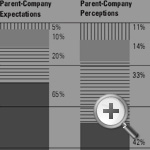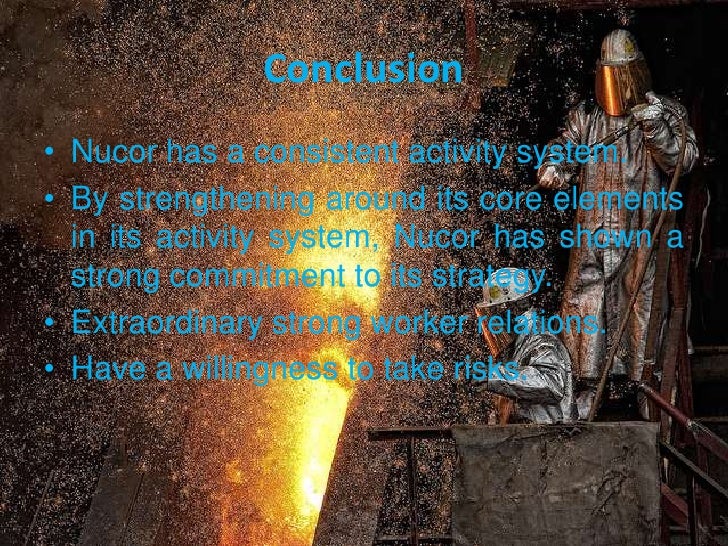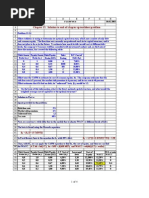Nucor At A Crossroads Pdf Reader
Nucor is a minimill decide if they spend a substantial portion of its assets on a commercial unproven technology to penetrate a large but previously inaccessible area of the steel market. This case is an integrative facilitate a full-blown analysis of a strategic investment decision. Nucor is a minimill decide if they spend a substantial portion of its assets on a commercial unproven technology to penetrate a large but previously inaccessible area of the steel market.
This case is an integrative facilitate a full-blown analysis of a strategic investment decision. This case is accompanied briefly show premium for teachers in the class of a video. To see the video, or show the students, click on the video icon.
Nucor at a Crossroads. As it may reveal key case details.Nucor is a minimill deciding whether to spend a significant fraction of its net. Nucor At A Crossroads Pdf Viewer. We also offer in house technical support and shop drawings through Marino WARE. Metal Barn Lean to Prices.
«Hide from Pankaj Ghemawat, Henricus J. Stander Source: HBS Premier Case Collection 22 pages. Publication Date: Aug 31, 1992. Prod #: 793039-PDF-ENG Nucor at a Crossroads HBR case solution.
. Burial of Suicides at Cross-Roads Author(s): W. Crooke Source: Folklore, Vol. 30, 1909), pp.

88-89 Published by: Taylor & Francis, Ltd. On behalf of Folklore Enterprises, Ltd. Accessed: 06:25 Your use of the JSTOR archive indicates your acceptance of the Terms & Conditions of Use, available at. JSTOR is a not-for-profit service that helps scholars, researchers, and students discover, use, and build upon a wide range of content in a trusted digital archive. We use information technology and tools to increase productivity and facilitate new forms of scholarship.
For more information about JSTOR, please contact support@jstor.org. Folklore Enterprises, Ltd. And Taylor & Francis, Ltd. Are collaborating with JSTOR to digitize, preserve and extend access to Folklore. This content downloaded from 188.72.127.85 on Tue, 10 Jun 2014 06:25:59 AM All use subject to JSTOR Terms and Conditions. 88 Correspondence.
' Do not weep, my dearest Mary, Take your baby on your knee; I'll be back to-morrow morning, And a sailor I shall be. ' I will buy you beads and ear-rings, I will buy you diamond stones, I will buy you a horse to ride on, When your baby's dead and gone.' Mary says she'll wear black ribbons, Mary says she'll put them on, Mary says she'll wear black ribbons, When her baby's dead and gone. It appears that the 'Jolly Jorden' of my Vancouver corre- spondent must be an accidental variant of 'Johnnie Jardine,' the Jardines and Johnstons being neighbour clans on the western border.
Meanwhile the verses about Johnnie Johnston and his true love appear to be a fragment of an old ballad otherwise unknown to, or forgotten by, me. I have not Child's collection here, in St. Andrews, but per- haps some reader of Folk-Lore is acquainted with the ballad.1 A correspondent suggests that 'Three Jolly Jordens' may be a corruption of 'Three Jolly Lordings.' 1 The ballad does not appear in Child's English and Scottish Ballads, edit.
BURIAL OF SUICIDES AT CROSS-ROADS. The question of suicide has been elaborately discussed by Dr. Westermarck (The Origin and Development of Moral Ideas, vol. He incidentally considers the question why suicides were buried at cross-roads. He remarks that, from time immemorial, the cross-road ' was a favourite place to divest oneself of diseases or other evil influences,' and he appears to suggest that the burial of suicides in such places was connected with the cross symbol, 'which is regarded as a conductor of the baneful energy emanating from the eye, dispersing it in This content downloaded from 188.72.127.85 on Tue, 10 Jun 2014 06:25:59 AM All use subject to JSTOR Terms and Conditions. Corres pondence.
89 all quarters of the wind, and thus preventing it from injuring the person or object looked at.' He mentions cases in which it was the habit to bury the dead at the cross-roads, and he asks whether this custom may not have given rise to the belief that such places were haunted (vol. 256, note 2). I should like to ask for further information as to the custom of burying the dead at such places, and for some further evidence as to the reason why the cross-roads were used for the removal of disease and the like. In India, at any rate, the reason is well known. A man, in the hope of passing on a disease like smallpox, places the exfoliated skin of the patient at the cross- roads, because if he puts it anywhere else, say before the door of a neighbour, he would be accused of special malignity, but, when it is laid at the cross-roads, the charm is aimed at no one in particular.
The disease clings to that luckless person who happens to be the first to pass by and touch the charm. Is it possible that suicides were buried at the cross-roads with the same intention?
A man might reasonably object to having a dangerous ghost planted upon him, if the corpse of a person dying by violence was buried close to his house. But, when burial was done at the cross-roads, the ghost would attack only those whom it was pleased to select. In short, it would be a matter of kismet. I have heard it suggested that the traffic over the head of the suicide kept down the ghost; or that, with a kindly intention, the unhappy wretch was placed under the protection of the cross which in Christian times usually stood at such places. These explanations seem to be hardly adequate; and I should be glad if any one can suggest a better explanation of the practice than that which I have proposed. THE BURRY-MAN. 379-) I was at Queensferry twelve years ago, on August 8, but by mischance did not see the Burry-man.
His costume is This content downloaded from 188.72.127.85 on Tue, 10 Jun 2014 06:25:59 AM All use subject to JSTOR Terms and Conditions Article Contents p. 89 Issue Table of Contents Folklore, Vol. 30, 1909), pp. I-viii+1-128 Volume Information pp.


I-viii Front Matter Errata p. Viii Minutes of Meetings pp.
1-5 The Thirty-First Annual Report of the Council pp. 6-11 Presidential Address pp. 12-31 Notes on Some Customs of the Lower Congo People (Continued) pp. 32-63 Collectanea Superstitions and Survivals amongst Shepherds pp. 64-70 Amulets from Costers' Barrows in London, Rome, and Naples pp. 70-71 Folklore Scraps from Several Localities pp. 72-83 A Miland Tale (Sarawak) pp.
83-85 Correspondence 'The Bitter Withy' Ballad pp. 86-88 Burial of Suicides at Cross-Roads pp. 88-89 The Burry-Man pp.
89-92 Copper Rod Currency of the Balemba p. 93 The Death Customs of the Aborigines of Western Australia, and the Spirits pp. 93-94 Distribution of Race and Language in Australia pp.
Nucor At A Crossroads Case Analysis
94-95 Lucky Horse-Shoes p. 95 'Sympathetic' Magic pp. 95-96 Reviews Review: untitled pp.
97-101 Review: untitled pp. 101-102 Review: untitled pp. 102-103 Review: untitled pp. 103-104 Review: untitled pp.
105-106 Review: untitled pp. 107-109 Review: untitled pp. 110-114 Review: untitled pp. 114-115 Review: untitled pp. 115-116 Review: untitled pp. 116-119 Review: untitled pp. 120-122 Review: untitled p.
122 Review: untitled pp. 123-124 Review: untitled pp. 124-125 Review: untitled pp. 125-127 Short Notices pp. 127-128 Back Matter.
Comments are closed.